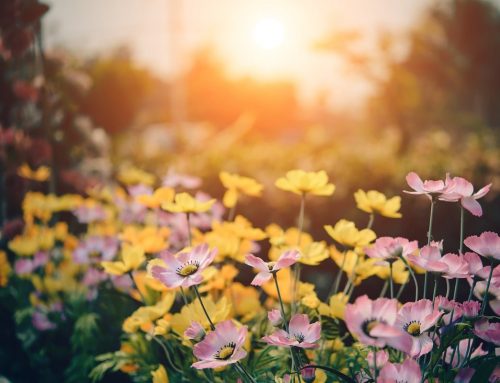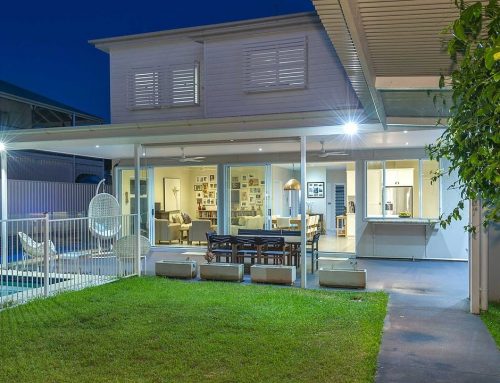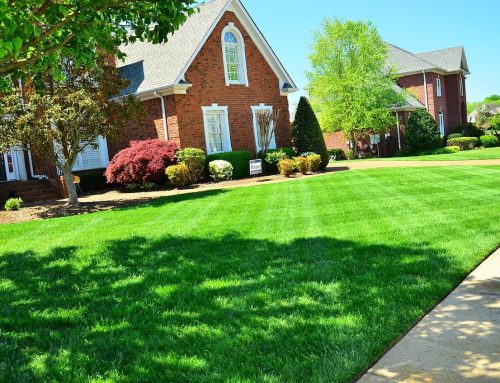If you’re looking for a way to grow fresh veggies and flowers in your garden, then a raised garden bed is your perfect option. Gardening amateurs and experts alike can benefit from building a raised garden. It’s quite easy to construct and manage and it can be done whether you have a spacious or small garden.
Benefits of building a raised garden bed
In a raised garden bed, you get to control everything to provide the best treatment for your plants. For instance, you can control soil quality by putting a soil and compost blend inside the bed. The plants will benefit from the higher nutrient content in the soil. Also, by building drainage into the bed walls, you keep the soil in place and avoid any erosion.
Meanwhile, the elevation of a raised garden bed allows the plants to get more sunlight that encourages their growth. Gone are the days of pulling out weeds. In raised bed gardens, there is little chance of weed and pest infestation. Plants stay protected and healthy in these elevated beds.
A raised garden bed is ideal for compact spaces. Because you are building an upright garden, with about 12 inches of soil, you can plant flowers or vegetables closer together than you would in a plot of land.
What’s more, compacted land won’t be a problem with raised beds, as the soil is protected from being walked on constantly. Hence, you can forego aerating or perforating your soil. It stays loose and suited for root growth. One less gardening task to worry about!
With a raised bed, your foliage grows well, upkeep is more efficient and you yield a lot for a small space.
How to build a raised garden bed
If you are planning on making a raised garden bed, it’s important to know the basic considerations involved: materials, location, construction and watering process. Here’s some information regarding each step.
Materials to use for the garden bed frame
Ideally, a raised bed is built directly on top of a garden patch. This is for homes that have an outdoor space. For those living in apartments, you can still build a garden bed, only it will have to be set on concrete flooring. It’s not recommended to build a raised bed on a wooden deck, as the weight could cause structural damage, especially when the bed is full of soil and water.
The bed frame can be made of any sturdy building material like rock, brick, cinderblocks – any material from which you can build a durable base that’s at least 12 inches deep.
The most commonly used material is lumber. Keep in mind, though, that there are some types of wood that are treated with toxic substances. Avoid using those especially if you’re building a garden to grow edible veggies. You can opt for cedar or redwood, which have natural rot-resistant properties, although these can be expensive and hard to find.
Pressure-treated lumber is a great option, because it is more durable and available in hardware stores. Just make sure that the wood treatment is safe around humans, pets and plants. Alkaline Copper Quaternary (ACQ) is deemed safe, while creosote and chromated copper arsenate (CCA) treatments are not.
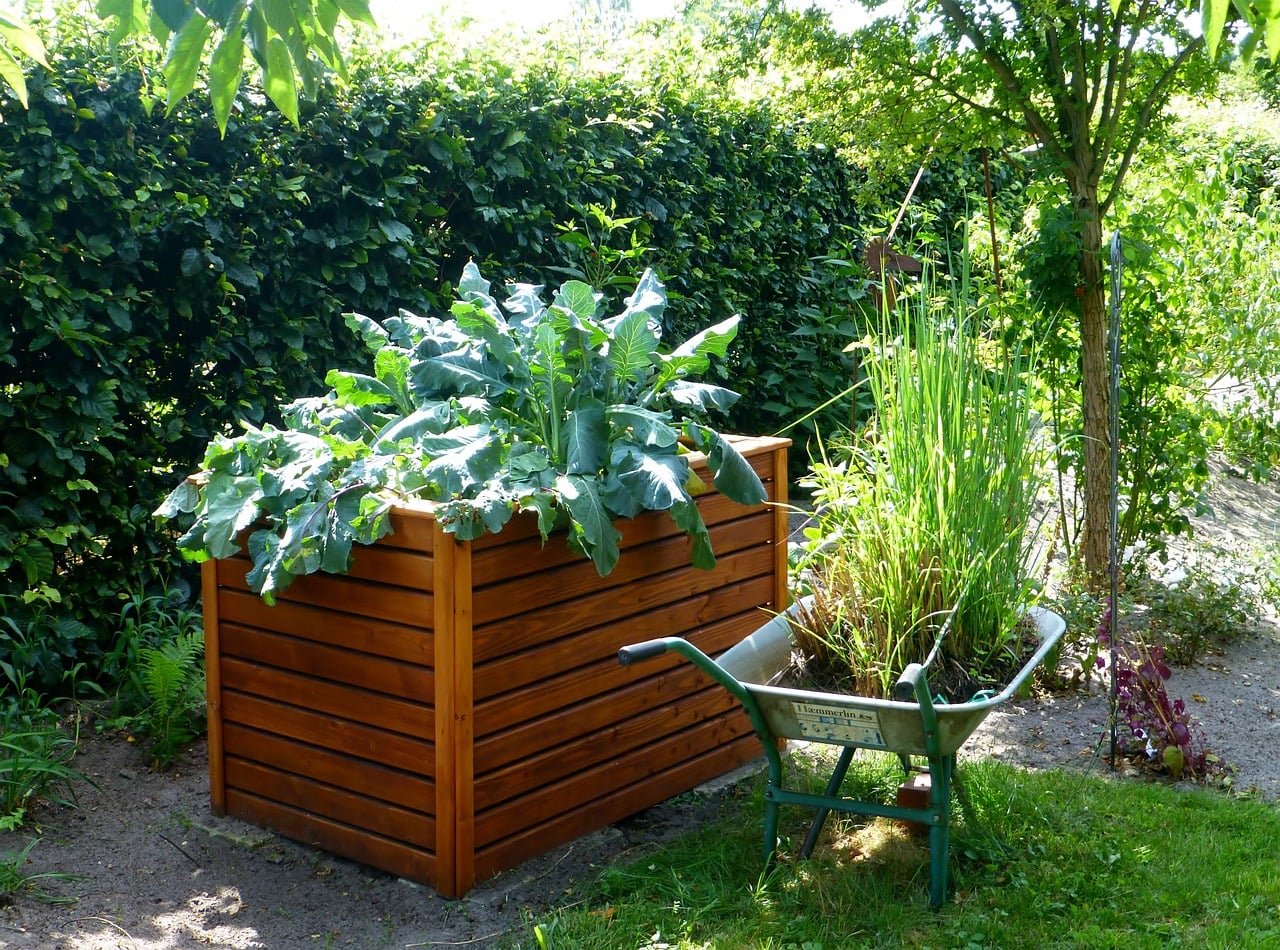 " data-srcset="/wp-content/uploads/2018/08/Raised-Garden-Bed-02-20x15.jpg 20w, /wp-content/uploads/2018/08/Raised-Garden-Bed-02-200x148.jpg 200w, /wp-content/uploads/2018/08/Raised-Garden-Bed-02-300x223.jpg 300w, /wp-content/uploads/2018/08/Raised-Garden-Bed-02-400x297.jpg 400w, /wp-content/uploads/2018/08/Raised-Garden-Bed-02-600x445.jpg 600w, /wp-content/uploads/2018/08/Raised-Garden-Bed-02-768x570.jpg 768w, /wp-content/uploads/2018/08/Raised-Garden-Bed-02-800x594.jpg 800w, /wp-content/uploads/2018/08/Raised-Garden-Bed-02-1024x760.jpg 1024w, /wp-content/uploads/2018/08/Raised-Garden-Bed-02-1200x891.jpg 1200w, /wp-content/uploads/2018/08/Raised-Garden-Bed-02.jpg 1280w" data-sizes="auto" data-orig-sizes="(max-width: 1280px) 100vw, 1280px" />
" data-srcset="/wp-content/uploads/2018/08/Raised-Garden-Bed-02-20x15.jpg 20w, /wp-content/uploads/2018/08/Raised-Garden-Bed-02-200x148.jpg 200w, /wp-content/uploads/2018/08/Raised-Garden-Bed-02-300x223.jpg 300w, /wp-content/uploads/2018/08/Raised-Garden-Bed-02-400x297.jpg 400w, /wp-content/uploads/2018/08/Raised-Garden-Bed-02-600x445.jpg 600w, /wp-content/uploads/2018/08/Raised-Garden-Bed-02-768x570.jpg 768w, /wp-content/uploads/2018/08/Raised-Garden-Bed-02-800x594.jpg 800w, /wp-content/uploads/2018/08/Raised-Garden-Bed-02-1024x760.jpg 1024w, /wp-content/uploads/2018/08/Raised-Garden-Bed-02-1200x891.jpg 1200w, /wp-content/uploads/2018/08/Raised-Garden-Bed-02.jpg 1280w" data-sizes="auto" data-orig-sizes="(max-width: 1280px) 100vw, 1280px" />
Where to put your raised garden bed
Find a flat spot in your garden where the walls are level. If there is none, you can dig and make the land even. Take advantage of natural light and orient your garden bed north to south so that your plants can receive sunlight for at least six hours a day. Make sure not to put your garden bed in a shaded location.
Building time!
If you’re planning to put the raised bed on top of your land, first remove any debris or weeds in the location. Line your planting bed frame with hardware cloth, landscape fabric or chicken wire. This lets the earthworms in but keeps out weeds and burrowing animals like moles which damage plants.
Outline the bed frame on the ground using a chalk or string, digging vertically along the outline deep enough to place half of the lumber or frame material. If your chosen wood isn’t treated, staple the inside of the walls with heavy-duty plastic before you add the soil.
Place the frame walls one after the other and assemble them together when all parts are dug into the ground. Raised beds sometimes need additional stability, so it might be a good idea to sink a post for each corner. These hold the bed in place and reduce the pressure a filled bed exerts on the walls.
For urban locations where the bed will sit on concrete, you can add a layer of gravel to your soil to improve drainage.
Adding soil and plants
Fill the bed with your enriched soil. Dig small holes and set the plants inside them, keeping the soil loose to allow air and moisture to reach the roots. If you are using container plants, break up the root ball before planting them in the bed.
The plants can be spaced closer together and just a few inches’ gap between them is enough to encourage growth.
If you’re using seeds, sprinkle them over the surface of the bed. Lettuce seeds, for example, can be put into the soil at 6-inch intervals. Once the seeds germinate, thin them out, leaving only one seedling per hole.
Watering
Water the raised bed immediately after planting. The best time to water your raised garden bed is in the morning when the sun is not too hot. This means less water will evaporate.
Protecting the plants
You can add a cover to your raised garden bed to keep birds and insects away. The cover can be made from mesh, bird netting or any gauzelike material that will still let in both sunlight and air inside.
A raised garden bed is one of the best things to add to your outdoor space. It’s great even for small spaces and it keeps your plants growing strong and healthy.
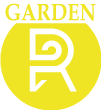
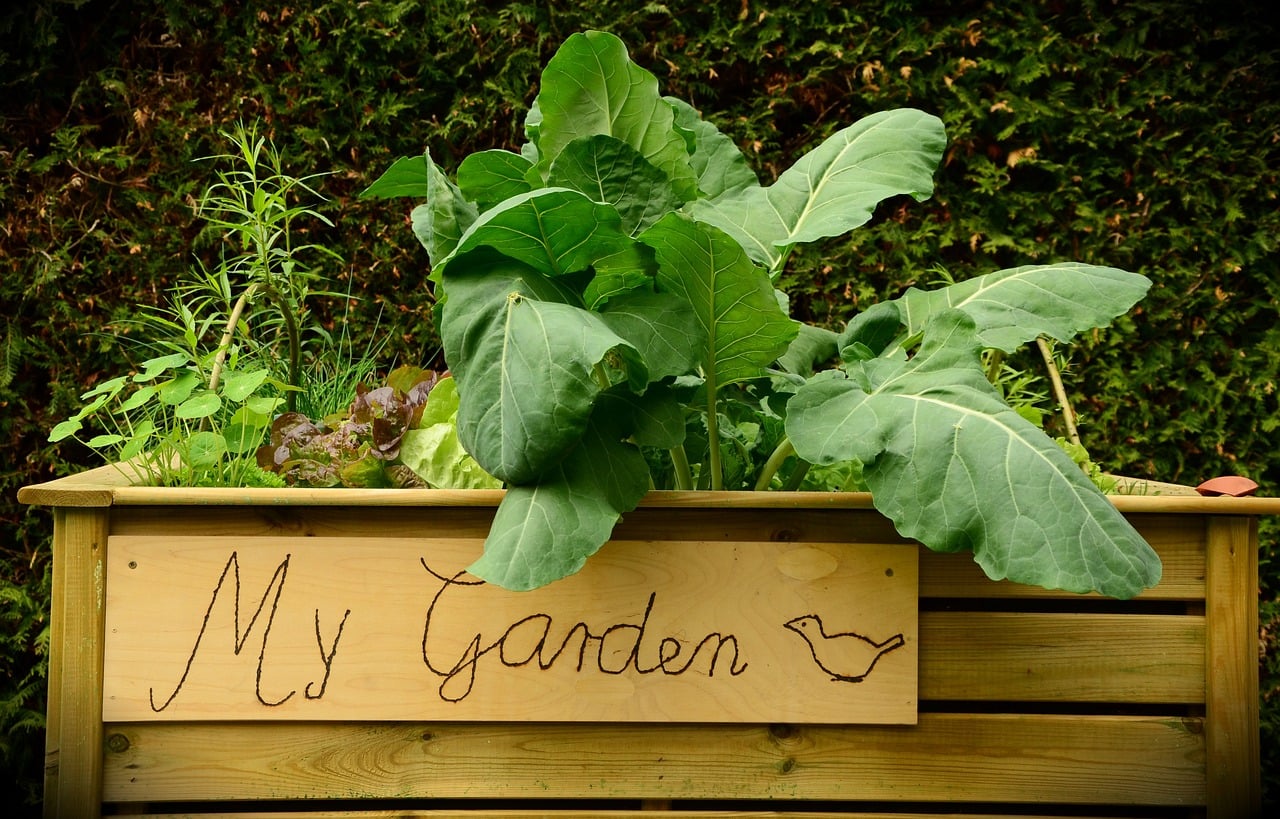 " data-orig-src="/wp-content/uploads/2018/08/Raised-Garden-Bed-01.jpg" data-srcset="/wp-content/uploads/2018/08/Raised-Garden-Bed-01-200x128.jpg 200w, /wp-content/uploads/2018/08/Raised-Garden-Bed-01-400x256.jpg 400w, /wp-content/uploads/2018/08/Raised-Garden-Bed-01-600x384.jpg 600w, /wp-content/uploads/2018/08/Raised-Garden-Bed-01-800x512.jpg 800w, /wp-content/uploads/2018/08/Raised-Garden-Bed-01-1200x768.jpg 1200w, /wp-content/uploads/2018/08/Raised-Garden-Bed-01.jpg 1280w" data-sizes="auto" />
" data-orig-src="/wp-content/uploads/2018/08/Raised-Garden-Bed-01.jpg" data-srcset="/wp-content/uploads/2018/08/Raised-Garden-Bed-01-200x128.jpg 200w, /wp-content/uploads/2018/08/Raised-Garden-Bed-01-400x256.jpg 400w, /wp-content/uploads/2018/08/Raised-Garden-Bed-01-600x384.jpg 600w, /wp-content/uploads/2018/08/Raised-Garden-Bed-01-800x512.jpg 800w, /wp-content/uploads/2018/08/Raised-Garden-Bed-01-1200x768.jpg 1200w, /wp-content/uploads/2018/08/Raised-Garden-Bed-01.jpg 1280w" data-sizes="auto" /> 